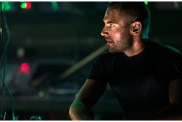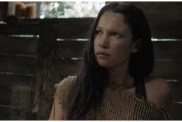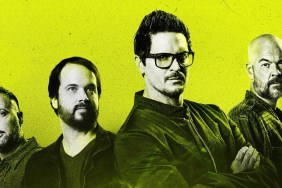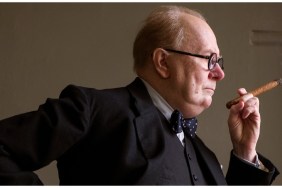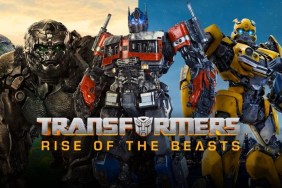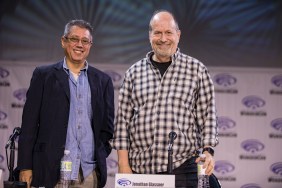Timur Bekmambetov is a man of some imposing charm, enhanced, no doubt, by where he chooses to throw his dinner parties. Nearly 700 feet above the bank of Moskva Rivers stands the Radisson Royal Hotel (formerly the Hotel Ukraina), one of the tallest in the world. From the top floor, visitors can catch distant glimpses of the other towering Gothic structures known as the “Seven Sisters,” laid out against the circular design of Moscow’s cityscape.
Late last year, ComingSoon.net was lucky enough to participate in a set visit for the Bekmambetov-produced The Darkest Hour, a science fiction thriller that proudly plays its Moscow-based production as one of its chief virtues. Bekmambetov was joined by producer Tom Jacobson for a lengthy conversation about their film and what they feel is a unique take on the genre from director Chris Gorak (Right at Your Door).
“From the beginning, it’s a metaphor for the foreigners,” says Bekmambetov of the plotline, “From the beginning of the movie, the American boys feel themselves like aliens here or they feel like Russians are aliens. There’s misunderstanding or miscommunication. Then when the real aliens appear, together they have to fight to survive.”

“Our young characters come to Moscow, which is a very exotic place,” adds Jacobson, “They all come for different reasons. Two young American guys, Emile Hirsch and Matt Minghella. They’re here for a business reason… But tight at the beginning of the movie, they get cheated. They’re here to launch a website and they think they have investors, but they’re young guys out in the big bad world. That doesn’t go well and then they meet these two young women, Olivia Thirlby and Rachael Taylor, who are here, traveling. And then the world ends… Then they’re lost and alone in this exotic city where all the signs are in Cyrillic. There’s no one around. That’s one of the reasons we came to Moscow. As a location, it’s very powerful. It’s beautiful. It’s got scope and scale and people haven’t seen it.”
Because the look of Russia is so unique to Western audiences, the architecture of Russia became one of the driving forces behind shooting the film in 3D. Instead of just using the effect to emphasize action, the production is using stereoscopics to enhance negative space, accentuating the desperate emptiness of the post-invasion environment.
“Moscow is very photogenic,” says Jacobson, “…It was very important for [Chris] to find locations and to capture this city so that it felt like you were really embedded in it, but so it also had scale and scope. Of course we shot some of the iconic locations like Red Square, but also certain other places that you might not know as a foreigner or as a tourist.”
“He has a unique eye,” says Bekmambetov about the production-designer-turned-director, “Russian directors, we are shooting the same streets. The same things. [Chris] has a fresh eye and found very interesting and very cool locations and angles and characters… People have an energy… I cannot force him, but the city itself drives him in the same direction.”
Of course, some locations are easier to empty than others. One major set piece involved clearing Red Square of its hundred thousand weekend visitors, which the shoot managed by closing off specific segments at a time and rotating the empty segment each day until the entire scene was complete.

“They were thrilled,” says Jacobson of dealing with the Russian government, “I mean, it’s business. They love the fact that we came here. This is actually the first time that an American movie has shot here in its entirety with, really, a Moscow-based crew.”
“Come see Moscow,” Bekmambetov jokingly suggests as a new tourism slogan, “Worthy of destroying!”
While shooting on location can be a nightmare of paperwork, the production unfortunately met with a very different problem last year when wildfires forced a halt to filming.
“It just gradually overtook us,” Jacobson recalls, “It was sort of unbelievable. These fires started and we were here, working… One morning we went out in the distance and it was hazy and then it just got worse and worse. And then, like the rest of the word — or certainly Moscow — we just couldn’t believe how bad it got. And then one day it got so bad that you couldn’t see 100 yards down the street. Then it started getting into the hotel. Smoke was in the corridors of the hotels. It was on stage. You could literally see it. Even though our stage was air conditioned, you could see it in the sets… It was the country on fire. So we couldn’t film.”
Not only did the fires create a hazard for the cast and crew but, because of the way 3D cameras work, even the smallest amount of smoke can kill the depth of a shot, something vital for Gorak’s plans. Within three days, the production was evacuated with no word on when or if it would be able to resume.
Thankfully, the break lasted only three weeks and wound up as something of a boon, giving the crew time in which to make alternate plans. Despite the extreme stress involved, the production was able to resume with a better grasp than ever on the production.
“Even now, the government is taking credit that they conquered the problem,” Bekmambetov laughs, “but in reality it’s just rain.”

Ironically, the mother nature element that the production had to combat is similar to what the characters go through in the film. Attempting to depict an extraterrestrial intelligence that audiences have never seen before took The Darkest Hour to a villainous force with foundations in real-world science.
“They’re based on electricity,” says Jacobson, “They’re creatures of electricity and electromagnetism… They interact with electricity and when the invasion happens, all of the power on the entire planet goes out. It’s based in Moscow, but they find out this is global. So the power goes out and it’s because the creatures are electrical in nature. They interact with electricity. That’s one of the things we’re having fun playing with between night and daylight.”
Because an ordinary horror film plays with darkness being more frightening, it made for an exciting challenge to pull the reverse. In this film, the entire world has gone dark and the aliens — who remain invisible for 90 percent of the film — can only be seen approaching when power returns to electronic devices. The protagonists end up pulling together light bulbs that they wear around their necks. When danger is approaching, the warning comes with the light.
“We did a lot of research, just to ground the science into lightning effects and ball lightning,” says Jacobson, “Sort of unusual effects that have never been explained… There’s a fantastic heroic Russian character in the center of the movie that they come upon who has discovered some nature of the aliens just through testing. Through traditional scientific method. He’s built a Faraday cage… It’s a cage of wires that no electricity can penetrate. You can be inside a Faraday cage and someone can shoot a bolt of lightning at it and it dissipates in the cage. So he’s built one of those and is using microwave science.”

(The science of ball lightning also seems to be the focus of a viral tie-in which is featured in an information packet that was waiting in the hotel room. Click here to check out a scientific article about the phenomena with “notes” from one of the film’s characters.)
Despite having a firm foot in science fiction, both Bekmambetov and Jacobson think of the film as an action thriller first and foremost.
“If you have a relatable story,” Bekmambetov says, “then the science fiction genre will help you to tell the story in a more entertaining, exaggerated and emotional way. It’s just a tool to tell the human story… Every creature and nightmare is just a metaphor for the nightmares we have in the real world.”
The Darkest Hour hits theaters on December 25. Check back soon for more reports from the Moscow set, including conversations with Gorak and his cast. In the meantime, click here to read ComingSoon.net’s Comic-Con report, here to watch the trailer and here to check out the full image gallery.
